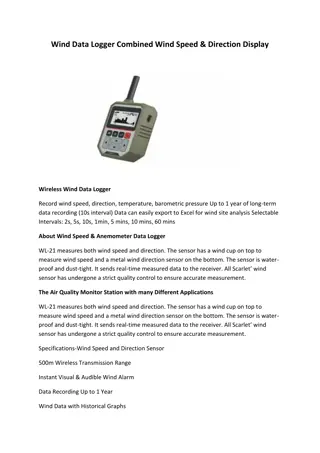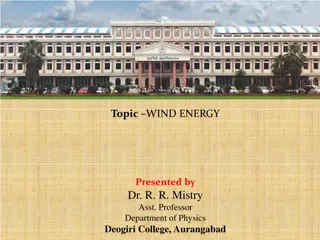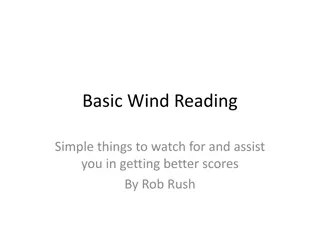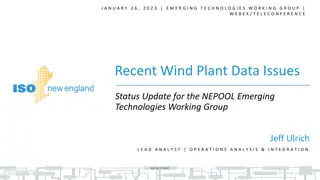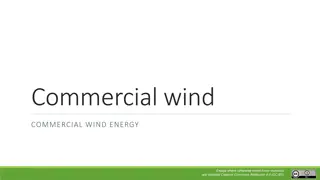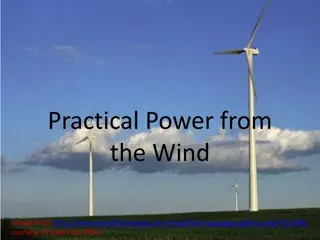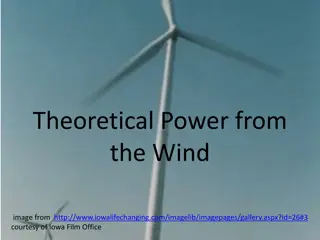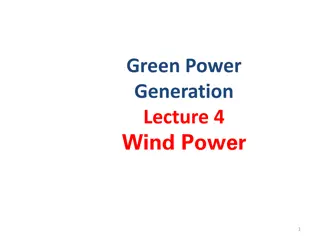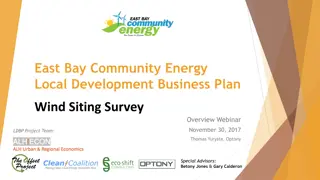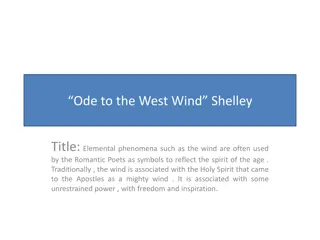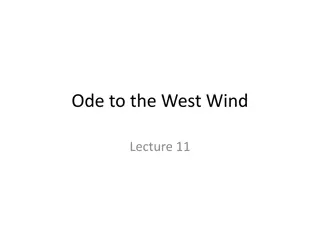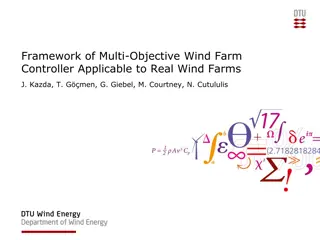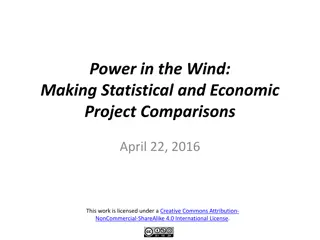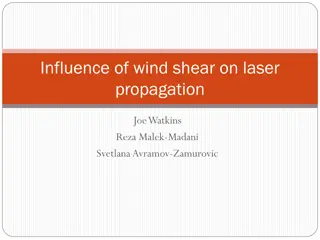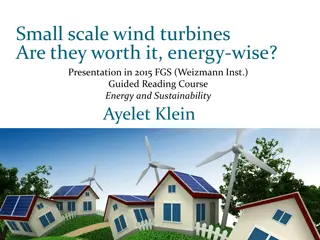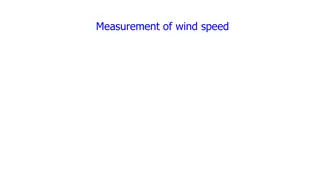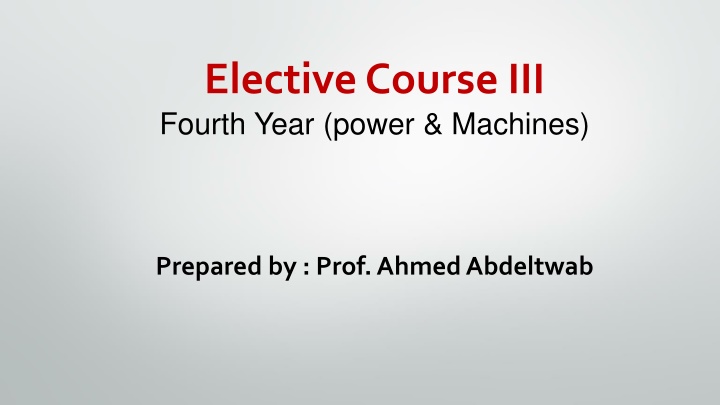
Wind Power Systems Overview
Wind power has a rich historical development, with various types of wind turbines harnessing the power of the wind to generate electricity. Discover the key aspects such as turbine efficiency, rotor design, and energy conversion methods. Explore the impact of tower height, speed control mechanisms, and factors influencing wind turbine performance. Gain insights into the transition towards sustainable energy sources and the global growth of wind energy infrastructure.
Download Presentation

Please find below an Image/Link to download the presentation.
The content on the website is provided AS IS for your information and personal use only. It may not be sold, licensed, or shared on other websites without obtaining consent from the author. If you encounter any issues during the download, it is possible that the publisher has removed the file from their server.
You are allowed to download the files provided on this website for personal or commercial use, subject to the condition that they are used lawfully. All files are the property of their respective owners.
The content on the website is provided AS IS for your information and personal use only. It may not be sold, licensed, or shared on other websites without obtaining consent from the author.
E N D
Presentation Transcript
Elective Course III Fourth Year (power & Machines) Prepared by : Prof. Ahmed Abdeltwab
Contents 1) Historical Development of Wind Power 2) Types of Wind Turbines 3) Power in the Wind 4) Impact of Tower Height 5) Maximum Rotor Efficiency 6) Wind Turbine Generators 7) Speed Control for Maximum Power 8) Average Power in the Wind 9) Simple Estimates of Wind Turbine Energy 10) Specific Wind Turbine Performance Calculations
1-Historical Development of Wind Power Wind has been utilized as a source of power for thousands of years for such tasks as: propelling sailing ships, grinding grain, pumping water, and powering factory machinery. The world s first wind turbine used to generate electricity was built by a Dane, Poul la Cour, in 1891. In 1930 - 1940, hundreds of thousands of small-capacity, wind electric systems were in use in rural areas not yet served by the electricity grid. In 1941 one of the largest wind-powered systems was built: 1250 kW , 175 ft-diameter, two-blades, wind speed up to 115 mile/h.
The global installed capacity of wind turbines has The global installed capacity of wind turbines has been growing at over 25% per year. been growing at over 25% per year.
installed wind capacity in different countries
- How do you convert wind energy into electricity? A wind turbine works the opposite of a fan. The wind turns the blades (two or three), which are connected to a generator and makes electricity. Wind turbines are mounted on a tower to capture the most energy. At 100 feet (30 meters) or more above ground, they can take advantage of faster and less turbulent wind (unpredictable air movement).
2-Types of Wind Turbines 1) Horizontal axis wind turbine (HAWT): Turbines with blades that spin around a horizontal axis parallel to the wind speed (commonly used). It has higher speeds because the blades are far from ground. 2) Vertical axis wind turbine (VAWT): Turbines with blades that spin around a vertical axis (rarely used). It has lower speeds because the blades are close to ground.
Horizontal axis wind turbine Vertical axis wind turbine
3- Power in the Wind Since power is energy per unit time, the power represented by a mass of air moving at velocity v through area A will be:
Then the wind power will become: Where : ?? is the power in the wind (watts); is the air density (kg/m3) (at 15 C and 1 atm, = 1.225 kg/??); A is the cross-sectional area through which the wind passes (??); V is the wind speed normal to A (m/s)
Notes: The power in the wind increases as the cube of wind speed. This means, for example, that doubling the wind speed increases the power by eightfold. Wind power is proportional to the swept area of the turbine rotor. For a conventional horizontal axis turbine, the area A is A= ( /4)??, so wind power is proportional to the square of the blade diameter. Doubling the diameter increases the power available by a factor of four. The cost of a turbine increases roughly in proportion to blade diameter, but power is proportional to diameter squared, so bigger machines have proven to be more cost effective.
The swept area of a vertical axis wind turbine (Darrieus rotor) is : ========================================= Example 1: Compare the energy at 15 C, 1 atm pressure, contained in 1 ?? of the following wind regimes: a) 100 hours of 6-m/s winds (13.4 mph), b) 50 hours at 3 m/s plus 50 hours at 9 m/s

